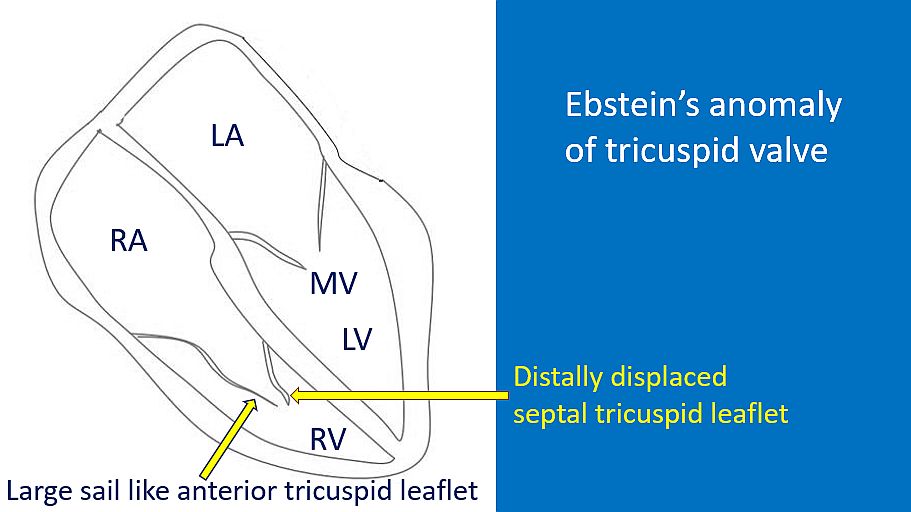Ebstein anomaly of the tricuspid valve
Ebstein anomaly of the tricuspid valve
Ebstein anomaly is one of the cyanotic congenital heart diseases in which natural survival to adulthood is not uncommon. A portion of the right ventricle is atrialized due to distal displacement of the septal and posterior leaflets of the tricuspid valve. The anterior tricuspid leaflet is large and sail like. It produces a loud tricuspid component of first heart sound while closing, which is called the sail sound. Half of the patients with Ebstein’s anomaly can have an atrial septal defect or a patent foramen ovale. In Ebstein anomaly, the right to left shunting is not due to pulmonary hypertension, but because the tricuspid regurgitation jet is directed across the atrial septal defect.

Almost half of the patients with Ebstein anomaly have evidence of a right sided accessory pathway with a WPW syndrome. This can be associated with atrioventricular reentrant tachycardias as well. Right atrial overload and polyphasic or splintered QRS complexes are the other ECG hallmarks of Ebstein’s anomaly.
The age of presentation in Ebstein’s anomaly may vary from childhood to adulthood depending on factors like the severity of tricuspid regurgitation, associated abnormalities like atrial septal defect and the pulmonary vascular resistance in the newborn. In the adult a striking feature is the huge enlargement of the cardiac silhouette, contributed mainly by the large right atrium and the atrialized portion of the right ventricle. While Ebstein’s anomaly may present with a murmur for evaluation in the pediatric age group, in adults it may present with atrial arrhythmias or heart failure with cyanosis or due to exercise intolerance. Auscultatory hallmarks of Ebstein’s anomaly are the multiple heart sounds and a superficial scratchy precordial murmur. Surgery may be offered to those with significant symptoms or tricuspid regurgitation.
An Ebstein’s type of anomaly can also occur in the left sided tricuspid valve in L-transposition of great arteries. This is an important cause of left sided AV valve regurgitation in corrected transposition of great arteries.


